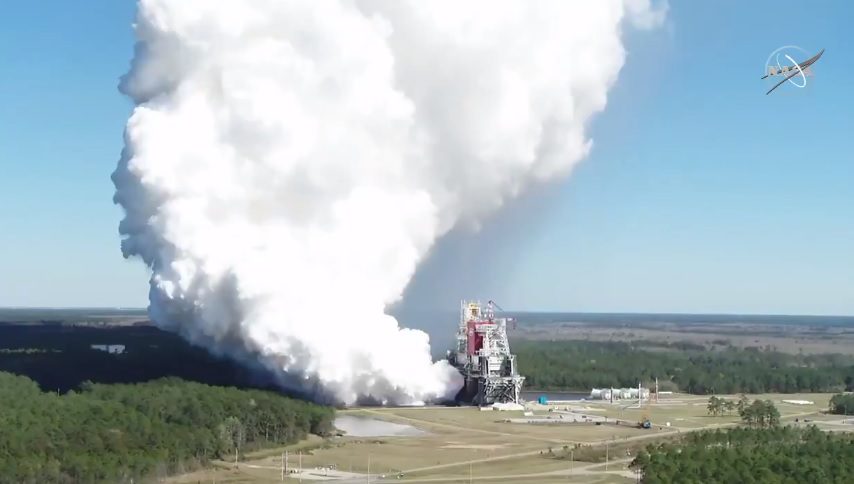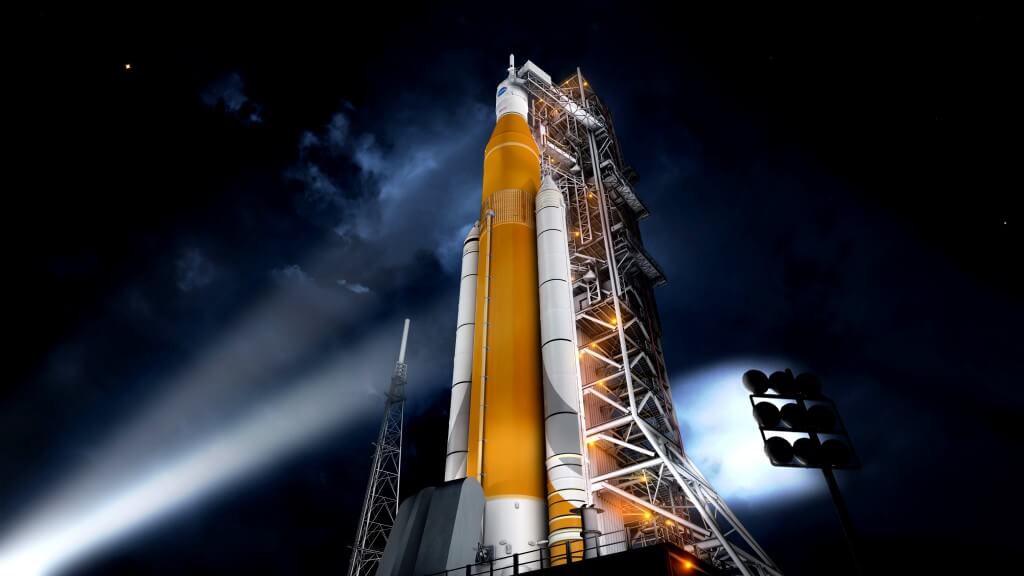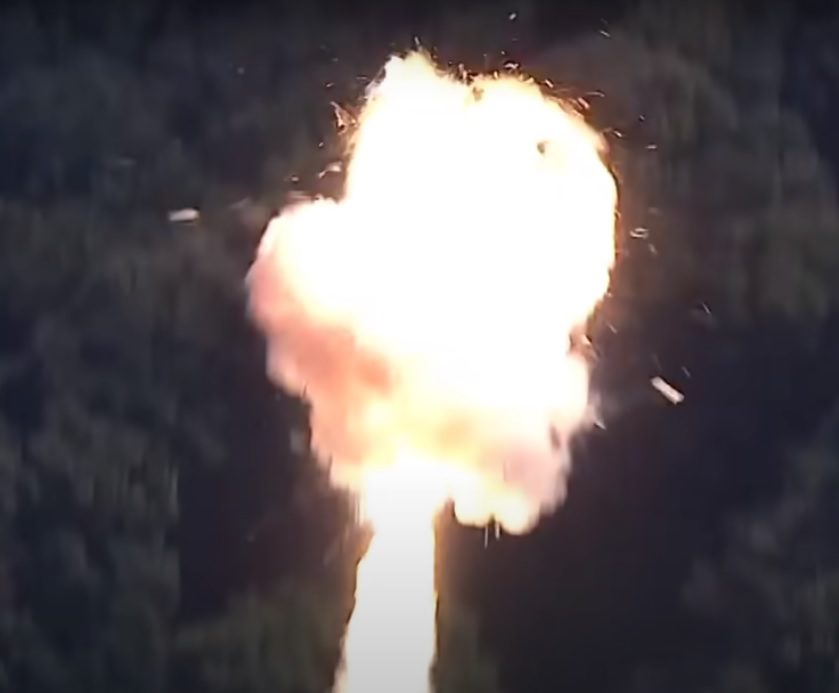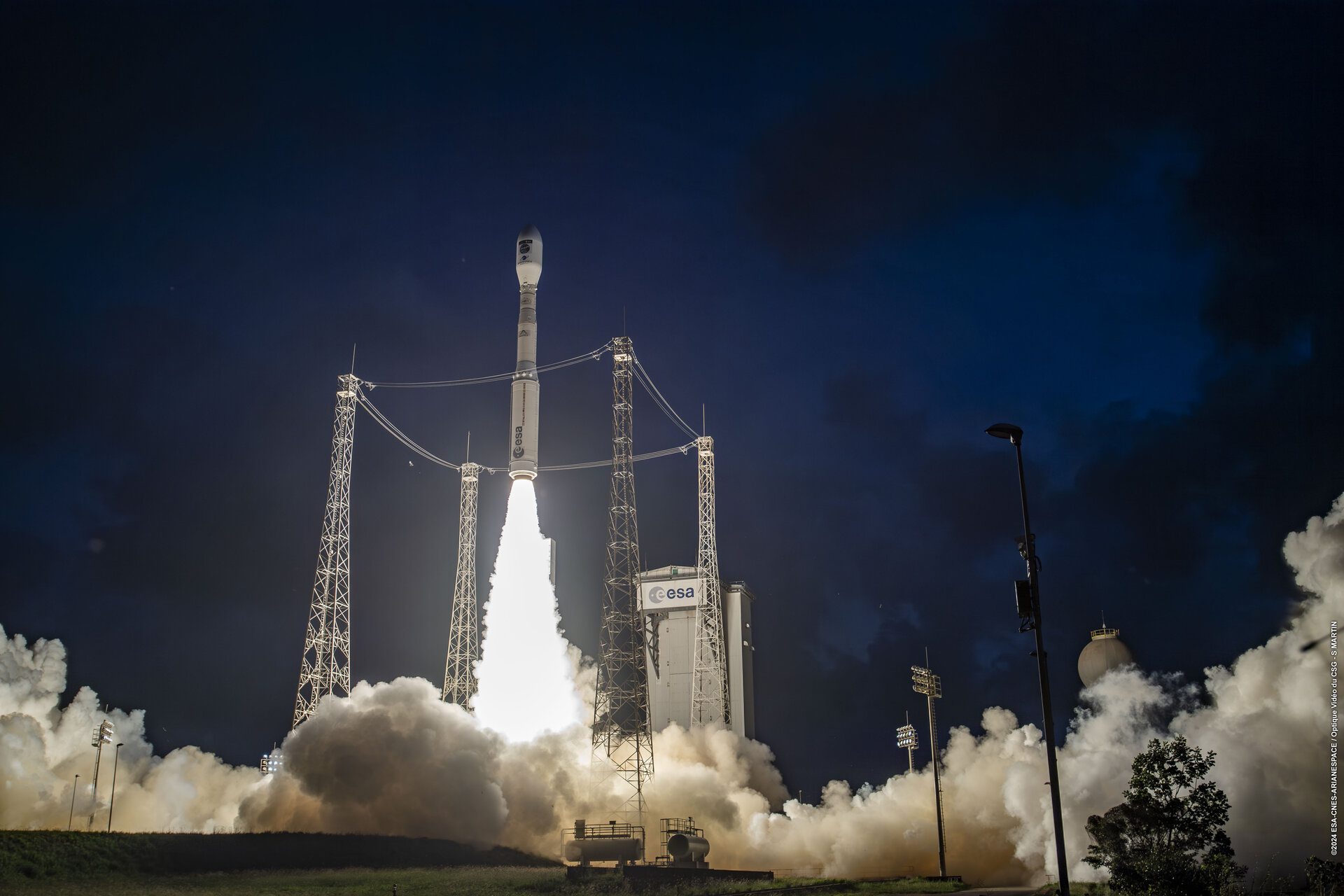NASA’s much delayed and very expensive SLS heavy-lift launch vehicle (HLV) has coming under renewed criticism as SpaceX’s partly reusable commercial HLV has advanced into its stage testing programme (the main super-booster stage is nearly constructed while the Starship upper stage is already flying atmospheric landing tests). Thus, the knives were out when an engine test firing of the SLS rocket’s core stage failed after only 67 seconds, at the Stennis Space Center in Mississippi on 16 January. It was feared the maiden flight would be further delayed until next year.
In the end, the failure turned out to have been due to a minor issue. An automatic shutdown was caused by Engine No 2’s hydraulic generating core stage auxiliary power units (CAPUs) exceeding pre-set limits related to the actual test stand being used.
And so, it provided some relief to NASA and the rocket engine maker, Aerojet Rocketdyne, when the four RS-25 main engine core managed to burn for over eight minutes during a second test at Stennis on 18 March. This success cleared the way for the core stage to be taken back to the Kennedy Space Centre so that it could be stacked, along with its current Delta IV-rocket derived ICPS (interim cryogenic propulsion stage) upper-stage,and fitted with solid rocket boosters ready for its unmanned (uncrewed) maiden flight at the end of the year.
However, all is not well for SLS. Many are wondering if NASA would not be wise to cancel the more powerful Block 1B and Block 2 versions of the SLS and the exploration upper stage (EUS). The EUS has recently been given the technical green light and has the budget funding to proceed.
It has been recently revealed that NASA is mounting a study to examine whether it really needs the later versions of SLS. There is particular concern over its per flight cost – at US$2 billion a shot – compared with commercial alternatives, which might be able to fly similar sized payloads for one tenth of the price.
Doubts about whether SLS will ever be cost-effective have led to the loss of some of its key “pork barrel” political backing in the US Senate. Even its supporters are beginning to leave the stage. Republican Senator Richard Shelby, a strong advocate of SLS given that much of the work is done in his Alabama constituency, is no longer Chair of the Senate Appropriations Committee and does not intend to stand for office again.
Nevertheless, SLS may yet get a stay of execution. This is because former Democrat Senator and strong proponent of SLS, Bill Nelson, is now likely to be appointed as NASA’s next Administrator. Even so, SLS is now likely to fly on only a handful of Project Artemis missions – in effect as an interim HLV rocket and, quite possibly, with commercial rockets backing it up. The previous NASA Administrator, Jim Bridenstine, mooted a plan involving the already operational SpaceX Falcon Heavy equipped with an ICPS as a possible alternative to SLS. While that idea was shot down by Senate pressure, there may yet be a role for the SpaceX rocket.
For example, NASA’s initial Project Artemis lunar landings could employ an ICPS-equipped Falcon Heavy to carry a lunar landing craft to lunar orbit, and just use the human-rated SLS Block 1 for the Orion spacecraft carrying the astronauts. More advanced commercial heavy-lift rockets, such as SpaceX’s Starship/Superbooster combination and Blue Origin’s New Glenn, could be used for later Artemis missions. A more detailed rundown of the NASA study into the future of SLS, by Eric Berger (Ars Technica), can be found here








